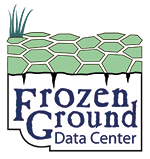
Northern Circumpolar Soils Map, Version 1
Data set id:
GGD602
DOI: 10.7265/eb1s-4551
This is the most recent version of these data.
Overview
This data set consists of a circumpolar map of dominant soil characteristics, with a scale of 1:10,000,000, covering the United States, Canada, Greenland, Iceland, northern Europe, Russia, Mongolia, and Kazakhstan. The map was created using the Northern and Mid Latitude Soil Database. The map is in ESRI Shapefile format, consisting of 11 regional areas.. Polygons have attributes that give the percentage polygon area that is a given soil type. The map shows the dominant soil of the spatial polygon unless the polygon is over 90 percent rock or ice. It also shows the proportion of polygon encompassed by the dominant soil or nonsoil. Soils include turbels, orthels, histels, histosols, mollisols, vertisols, aridisols, andisols, entisols, spodosols, inceptisols (and hapludolls), alfisols (cryalf and udalf), natric great groups, aqu-suborders, glaciers, and rocklands. Data are available via ftp.
Parameter(s):
PERMAFROSTSOIL CLASSIFICATION
Platform(s):
Not Specified
Sensor(s):
Not Specified
Data Format(s):
Shapefile
Temporal Coverage:
Not Specified
Temporal Resolution:
Not Specified
Spatial Resolution:
- Not Specified
Spatial Coverage:
N:
90
S:
45
E:
180
W:
-180
Blue outlined yellow areas on the map below indicate the spatial coverage for this data set.